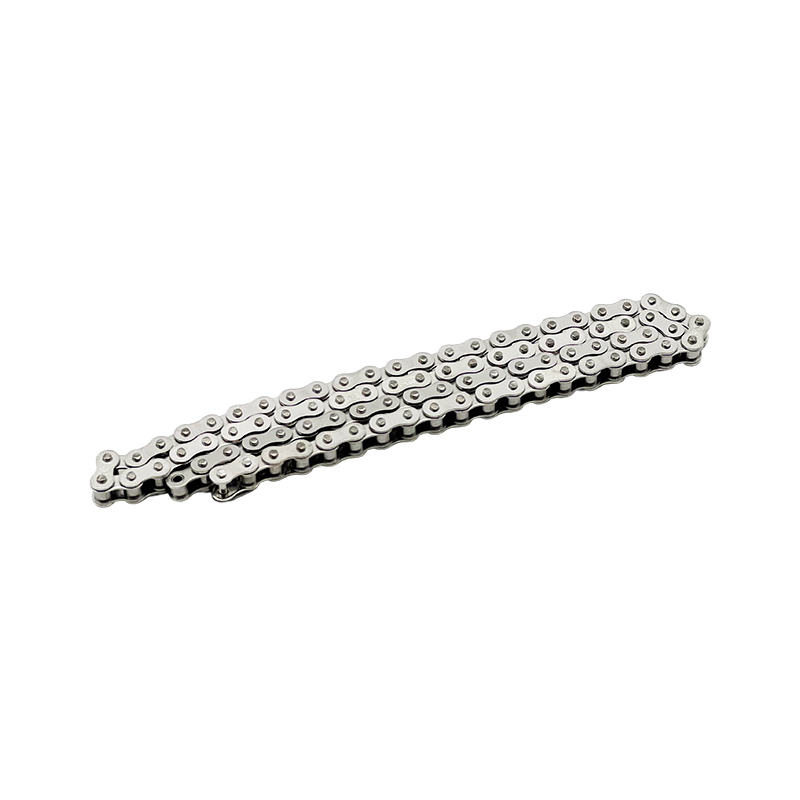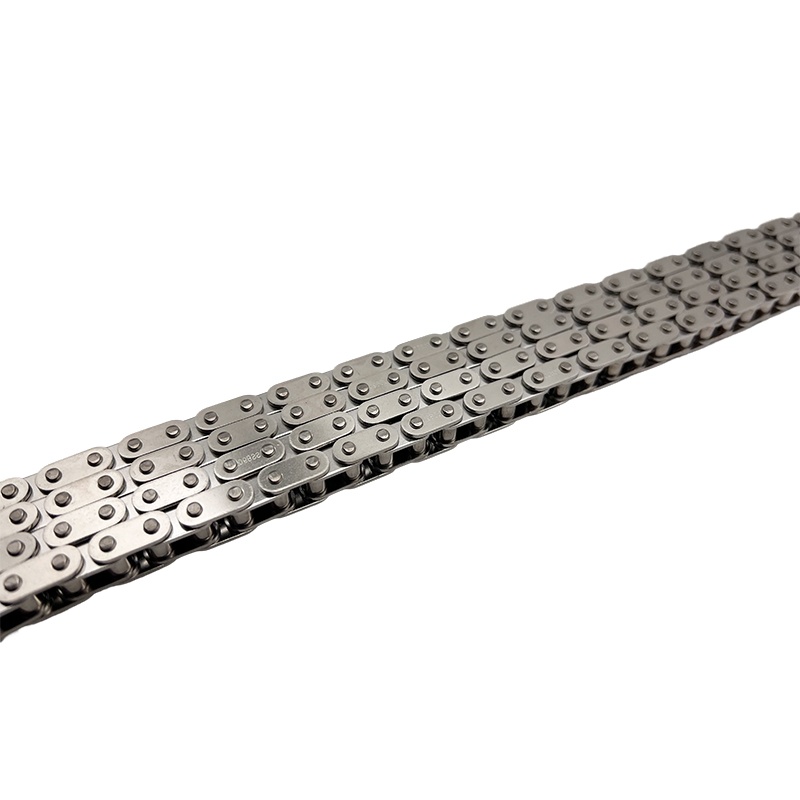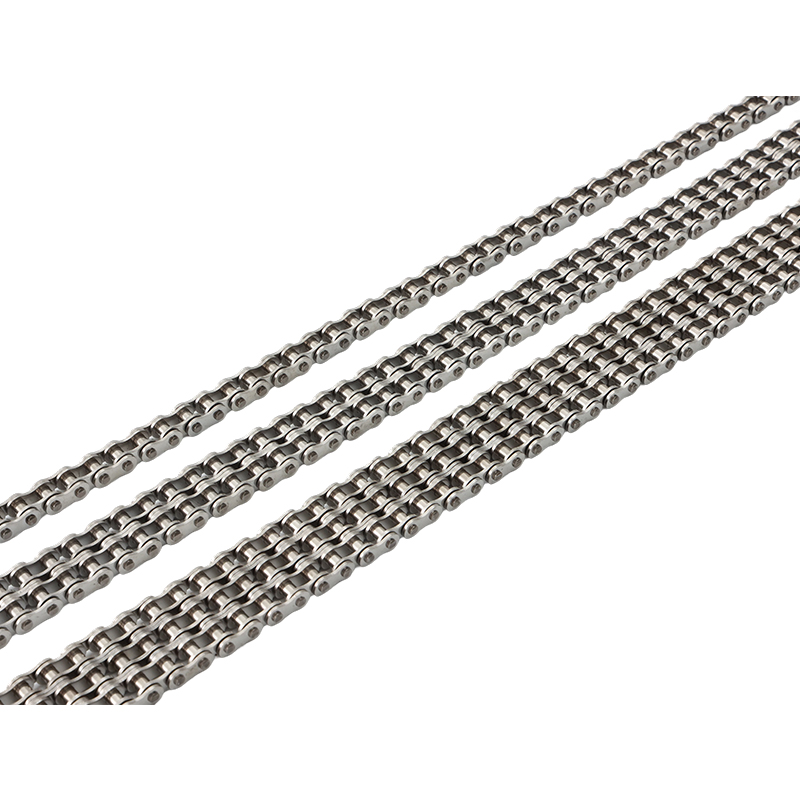How can the pitch accuracy of a stainless steel 304 transmission chain be controlled through the manufacturing process?
Release Time : 2025-11-21
Pitch accuracy control in stainless steel 304 transmission chains is a core element ensuring the smooth operation of the transmission system. Its manufacturing process requires coordinated optimization across the entire process, from material selection, forming, heat treatment, surface treatment to assembly and inspection, to achieve pitch uniformity and stability.
In the raw material preparation stage, 304 stainless steel coils must be rigorously screened to ensure their chemical composition meets standards. 304 stainless steel's core components are 18%-20% chromium and 8%-10.5% nickel, a ratio that gives it excellent corrosion resistance and mechanical properties. The purity of the raw material directly affects the stability of subsequent processing. If the coil contains inclusions or component segregation, it can cause cracks during cold or hot bending, leading to pitch errors. Therefore, spectral analysis of the material composition and ultrasonic testing are necessary to detect internal defects, ensuring the foundation of pitch accuracy from the source.
The forming process is a crucial step in controlling pitch accuracy. Stainless steel 304 transmission chain plates are typically processed using cold or hot bending processes. Cold bending is suitable for thin-walled chain plates with small bending radii. It involves plastically deforming the sheet metal through die extrusion. During this process, the die gap and extrusion speed must be controlled to avoid pitch fluctuations due to springback. Hot bending, on the other hand, is used for thick-walled chain plates with large bending radii. It requires precise control of heating temperature and cooling rate to prevent deformation caused by thermal stress. For example, one company significantly reduced pitch error by optimizing hot bending process parameters, thereby reducing residual stress after bending the chain plates.
Heat treatment is crucial for eliminating processing stress and stabilizing pitch dimensions. After forming, 304 stainless steel retains residual stress caused by plastic deformation. If this stress is not eliminated in time, it will cause pitch changes during subsequent use due to stress release. Solution treatment is a common method. By heating to a high temperature and rapidly cooling, the carbides are fully dissolved, forming a uniform austenitic structure, thereby reducing hardness, increasing toughness, and eliminating residual stress. For example, a transmission chain manufacturer uses a staged quenching process, heating the chain plates and cooling them in stages to ensure hardness requirements while avoiding pitch deformation caused by thermal stress.
Surface treatment processes indirectly ensure pitch accuracy by enhancing wear resistance. Stainless steel 304 transmission chains experience wear due to friction during operation. If the surface hardness is insufficient, the chain teeth will gradually deform, leading to an increase in pitch. Blackening or galvanizing processes can improve surface hardness, forming a protective layer and reducing wear. For example, blackening generates a dense oxide film on the chain surface through an oxidation reaction, achieving a hardness of HV500-600, effectively resisting particle wear; galvanizing, on the other hand, electroplats a zinc layer onto the surface, providing both corrosion protection and improved wear resistance, extending the time the pitch accuracy is maintained.
The precision of the assembly process directly affects the overall pitch uniformity of the transmission chain. The clearance between the chain plates and pins must be strictly controlled. If the clearance is too large, impacts will occur during operation, causing dynamic changes in the pitch; if the clearance is too small, increased friction will accelerate wear. A company employs high-precision CNC machine tools to process chain plate holes and pins, controlling the fit clearance within an extremely small range. A laser measuring instrument is used to verify the pitch error after assembly, ensuring that the pitch deviation of each chain plate does not exceed the standard value.
The inspection process is the final line of defense for pitch accuracy control. After the transmission chain is manufactured, a full-dimensional scan of the pitch is performed using specialized inspection equipment. The laser measuring instrument enables non-contact, high-precision inspection. By emitting a laser beam and receiving the reflected signal, it calculates the distance between chain plates, resulting in extremely high accuracy. A certain inspection standard requires that the transmission chain pitch fluctuation range be controlled within a very small tolerance; products exceeding this range are deemed unqualified, preventing transmission jamming or vibration caused by pitch errors.
Pitch accuracy control of stainless steel 304 transmission chains is the result of collaborative efforts across multiple stages, including material selection, forming, heat treatment, surface treatment, assembly, and inspection. From controlling the chemical composition of raw materials to optimizing molding process parameters, from stress relief during heat treatment to wear-resistant enhancement through surface treatment, and then to the precision verification of assembly clearances, each step must be strictly controlled to the micron level to ensure the long-term stable operation of the transmission chain under high-speed and heavy-load conditions.







